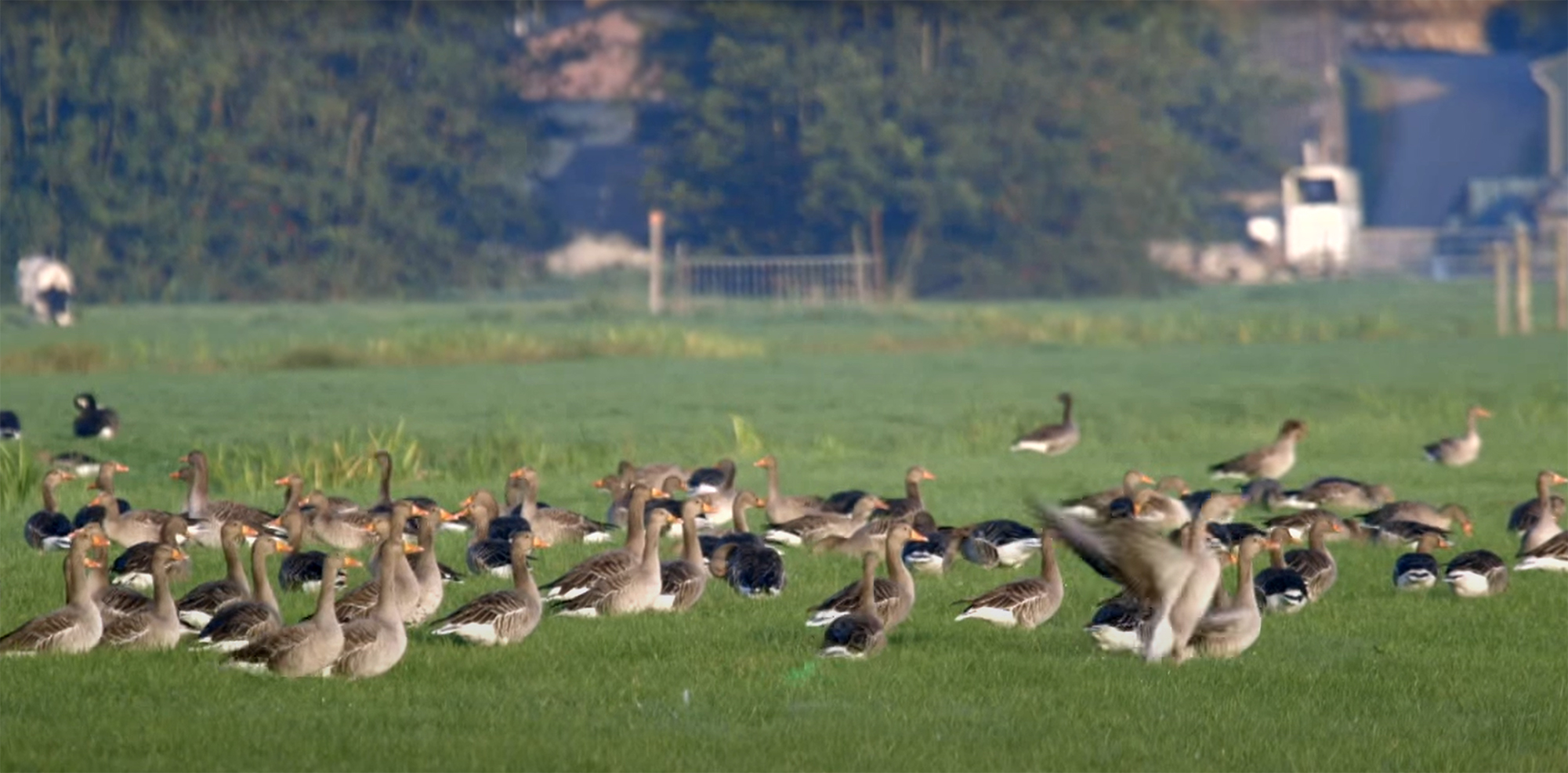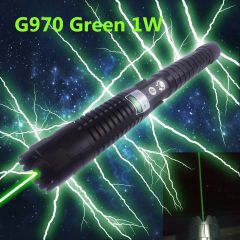Green laser pointer is a very effective tool for birds(and goose) dispersal

As the demand for non-lethal, environmentally safe methods of bird scaring has increased, interest has grown in the use of lasers, particularly low-power lasers that work under low light conditions. The low power levels, accuracy over distance, silence and the ability to direct them on specific problem birds, makes laser devices an attractive alternative to other avian scaring devices. Birds are startled by the strong contrast between the ambient light and the laser beam. During low light conditions this technique is very selective, but at night the light beam is visible over a large distance and hence can cause non-selective disturbance. Unpublished data from trials on French airfields indicate that these devices are ineffective in bright daylight conditions, and the device worked best when shone in birds’ eyes. Results of pilot trials undertaken on UK cormorants and goosanders support this effect (McKay et al. 1999).
Lasers have been tested in a number of countries. In France, a laser gun was used to disturb cormorants from a night roost (Troilliet pers. comm., cited in Boudewijn and Dirksen 1996). During cloudy weather the method worked well, with most of the birds scared away within 20 minutes, and treatment over consecutive evenings caused the temporary desertion of the roost. Cormorants appeared to be particularly sensitive to laser light. Similar results were obtained at a cormorant night-roost in the region of the Dombes, France. After using a laser gun for two nights, the night-roost was deserted for a week (Broyer 1995, cited in Boudewijn and Dirksen 1996).
Successful results were also achieved in America using the laser gun ‘Avian Dissuader’, costing US$900. The laser treatment cleared roosting crows from the Capitol complex within an hour (State Capitol Bureau 2001). The long-term success is not reported.
In Britain, laser light was tested against two cormorant night roosts (McKay et al 1999). At one site cormorant numbers were significantly reduced after seven consecutive days use and bird numbers did not return to normal until between 12 and 30 days later. At the other site, the laser gun was less effective with some birds failing to leave the roost. The laser also deterred goosanders though the effect lasted less than one day.
The laser gun used in this British study was a purpose-built device produced by Desman S.A.R.L. of France and cost £4633 (at 1996 prices). Training in its use by the manufacturer cost another £1056. There were some questions over safety of the device because although the company state that the laser was safe, they also advised that it should not be pointed at humans. The device has been tested for safety at the UK Government’s Defence Evaluation and Research Agency (DERA), Farnborough, England and found to be safe if it was not pointed at an unprotected eye within a distance of 155 m (McKay et al. 1999). The safe distance was considerably reduced if viewed with binoculars.
The use of lasers can be an effective method of bird scaring, although there is some evidence to suggest some birds are laser-resistant (McKay et al. 1999). The equipment is expensive and specialized training is required, adding to the costs. As the effectiveness of the laser decreases with increasing light levels, it is likely to be most effective at dawn and dusk. Its usefulness may therefore be confined to night time roosts and feeding sites at dawn. As it is operated manually user costs at anti-social hours must also be taken into consideration. However, the ability to ‘target’ specific problem species may be useful at certain sites, such as areas of conservation interest, where disturbance of non-target species may be kept to a minimum.











